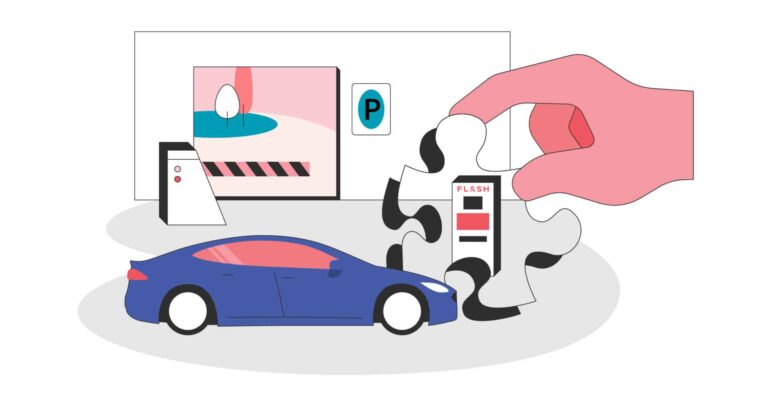Commuters and urban travelers may not realize just how complex a city parking system can be while they’re searching for on-street spaces or heading into a parking asset. An urban planner’s mission is to make this experience as seamless as possible while also maximizing revenue. For municipalities, connecting a city-wide infrastructure of thousands of spaces through hardware and software provides a smooth experience for any type of parker in any asset.
At least, that’s the goal.
In reality, efficient city parking is a constant challenge in even the most modern smart city. People have different needs that require varied parking solutions and configurations. And in such a vast system that spans an entire town or city, parking technology that can handle supply management and transactions is becoming the gold standard.
So, how can cities approach finding the ideal mobility solutions to fit their needs? The RFP and selection process is daunting, but you can get a great start by asking the right questions and knowing what you need from your providers.
Read our list of the top questions you should be asking while searching for solutions.
Are we accommodating new travel habits?
Historically, people who regularly used off-street city parking had permits for a fixed amount of time, making commuting much more predictable. The advent of flexible work weeks and new travel habits have changed things. People are no longer bound to a recurring daily commute, and, as a result, revenue from permitting has suffered.
Ask yourself if you’re compensating for changes in travel habits, as some cities are finding novel ways to address these shifts. For example, Sacramento has SacPark, which allows people to reserve parking in advance in municipal assets so they can choose the days they want to commute. This is a case of “if you build it, they will come,” in which you’ll attract commuters by designing a system that works for today’s needs.
Will our technology future-proof our operations?
Solving today’s problems and offering current solutions is excellent. But, technology evolves quickly, as do people’s expectations. One of the largest roadblocks to newer parking technology is the use of legacy hardware. These old systems are difficult to change and require specialized service for repairs, keeping them out of commission for extended periods of time. If you want to future-proof your technology, consider the next generation of cloud-based parking solutions like FLASH, which can be upgraded remotely and are easy to augment or repair.
Don’t forget—as a city, you’re also competing with commercial mobility. Commercial assets are looking to keep people interested by introducing new technologies, like EV charging and micro-mobility. Lead the pack by investing in similar technologies that can reach your citizens on a larger scale.
How are people preferring to pay?
Payments deserve their own category in your urban parking management. A majority of 74% of people aim to keep using contactless payments post-pandemic. That means cities have to be extra diligent in introducing touchless transactions to their assets, particularly because they’re typically high-traffic areas.
An example of a city that innovated to make transactions more seamless is Las Vegas, which introduced FlowBird and ParkWhiz (Arrive) Scan-to-Pay payments that only require users to scan a QR code for a contactless experience.
Will the equipment be easily serviceable?
When you finally reach an agreement and install your new services, what happens when the hardware and software need upgrades or repairs? It’s an often-overlooked question that comes up post-installation. Accounting for maintenance at the beginning of your search can save you tons of time and trouble in the future.
Legacy systems are often isolated within their specific assets and need specialized time and care for even the smallest of updates. With newer systems, like FLASH hardware that connects to cloud software, upgrades are automatically delivered and installed digitally. What’s more–your team can be trained to handle ongoing maintenance should the need arise. Our systems are designed to be truly plug-and-play. They’re easily installed and serviced—and you’re given the education to manage the system yourself.
What will our total cost of ownership be?
Traditional parking equipment is typically a huge capital expenditure. You have to buy the equipment outright, and also deal with distributors who have their own way of doing things next to the manufacturers. The result is a situation with a high initial expense and steep ongoing maintenance costs—a high total cost of ownership.
There are newer cost structures and procurement models available. For example, FLASH offers a hardware-as-a-service (HaaS) model. Instead of owning the equipment, operators save money and pay a monthly subscription fee, which includes any maintenance. We also work with operators directly and skip distributors. When you consider all the costs, this option often has a lower total cost.
How are we addressing new pathways of mobility demand?
People are looking for parking digitally more than ever. Parking reservations are more popular, as people want the added convenience of finding and paying for parking at the start of their journey. Apps like ParkWhiz are being used by cities to connect people with spaces.
Perhaps most important of all—parking isn’t just parking anymore. The parking garage of the future is a mobility hub that includes other travel options like ride-share integrations and the micro-mobility mentioned above. Commuters are adding new travel options to their journey, like picking up a scooter after parking their car to get to the office. If you can accommodate and provide ways to facilitate this movement, you’ll be ahead of the game.
Cities can revolutionize parking for their commuters by ensuring their systems are up to the task. Use the questions above as a way to guide your decision.
For more information on what FLASH can do, set up a free demo.
Join the Parking Revolution, Subscribe
to Our Newsletter
We’re disrupting the parking industry because we believe our customers, consumers, and cities deserve better.

